 The Raupenschlepper Ost, literally “Caterpillar Tractor East”, is more commonly abbreviated to RSO. This fully tracked, lightweight vehicle was conceived in response to the poor performance of wheeled and half-tracked vehicles in the mud and snow during the Wehrmacht’s first winter on the Soviet Front. Steyr responded by proposing a small fully-tracked vehicle based upon its 1.5 tonne truck (Steyr 1500A light truck) already in use in the army. The vehicle was introduced
The Raupenschlepper Ost, literally “Caterpillar Tractor East”, is more commonly abbreviated to RSO. This fully tracked, lightweight vehicle was conceived in response to the poor performance of wheeled and half-tracked vehicles in the mud and snow during the Wehrmacht’s first winter on the Soviet Front. Steyr responded by proposing a small fully-tracked vehicle based upon its 1.5 tonne truck (Steyr 1500A light truck) already in use in the army. The vehicle was introduced 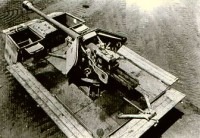 in 1942 as the Raupenschlepper Ost (RSO). It was initially designed as a prime mover and artillery supply vehicle but eventually served in a wide variety of roles. By 1943, the complaints of the infantry anti-tank units at the front that it was almost impossible to move their guns using trucks at daylight under enemy fire, leading to enormous losses of equipment when an emergency relocation (at the time more of a euphemism for withdrawal) was necessary found their way to the top. This led OKW to consider an older proposition to fit the 7.5 cm PaK 40/1 anti-tank gun -by then the standard Pak- on top of a RSO chassis and Hitler after seeing the blueprints ordered a limited production run for combat testing even before the test vehicles were completed.
in 1942 as the Raupenschlepper Ost (RSO). It was initially designed as a prime mover and artillery supply vehicle but eventually served in a wide variety of roles. By 1943, the complaints of the infantry anti-tank units at the front that it was almost impossible to move their guns using trucks at daylight under enemy fire, leading to enormous losses of equipment when an emergency relocation (at the time more of a euphemism for withdrawal) was necessary found their way to the top. This led OKW to consider an older proposition to fit the 7.5 cm PaK 40/1 anti-tank gun -by then the standard Pak- on top of a RSO chassis and Hitler after seeing the blueprints ordered a limited production run for combat testing even before the test vehicles were completed.

|
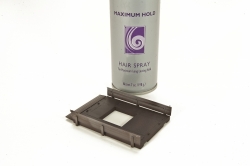
|
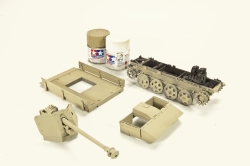
|
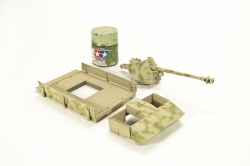
|
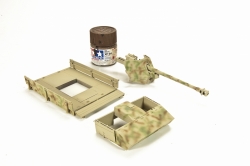
|
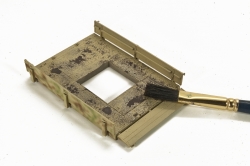
|
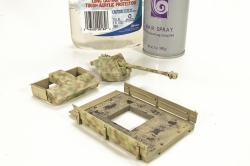
|

|
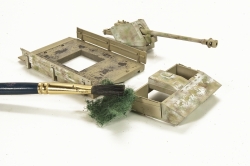
|
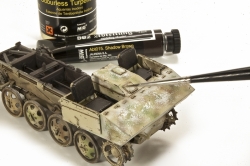
|
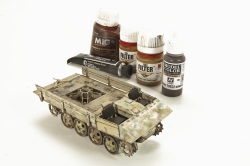
|
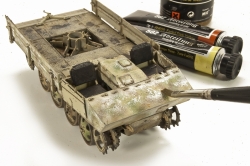
|
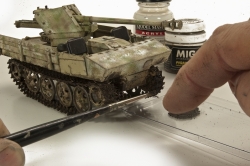
|

|
The result was a lightweight, inexpensive to produce and highly mobile infantry anti-tank weapon though more exposed compared to theconventional panzerjagers. Despite that the vehicle was intended to be used by the infantry anti-tank units, all pre-production vehicles were issued to armored units (Panzer Jager Abteilungen 743 and 744, and 18th Panzergrenadier Division) due to the urgent need for replacements The vehicle gave a good accounting of itself in action with Army Group South and plans were made for large scale production. In the end, however, no production order was ever issued with only 60 of the pre-production vehicles ever seeing action.
Way back in the day I remember building I believe it was the Italeri release of the cab version of the RSO. That was some years ago, so when Dragon announced the release of the RSO Pak.40/4 I was of course interested. When David Grummitt, editor of Military Modelcraft International, asked if I would be interested in building one for his magazine I of course gave a quick answer “yes”.
As a whole the RSO kit is a fairly quick build, not a lot of parts. That is not to say, however, that this will be a trouble free project. My biggest challenge centered on the construction of the front and rear axles – Step 4 (assemblies H & J). These assemblies are plagued with poor fitting parts and confused construction diagrams. In addition, the instructions call for affixing the drive wheels early in the construction process. However, this can lead to problems later when it becomes time to align the guide teeth to the tracks. It would be better to wait and install the tracks and drive wheels at the same time. Speaking of wheels the mounting pins for the road wheels are almost non-existent making them a sure bet to be broken off at some point; I would suggest adding a small brass pins for added strength. And finally, apparently the Dragon designers took their cues from a restored museum vehicle which had the original seats replaced with American post-war M113 seats.
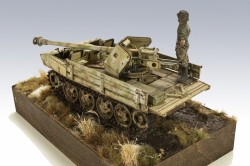
|
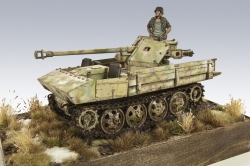
|
Construction of the remainder of the kit was delightful, much more in keeping with Dragon’s usually high standards. The gun is nice coming from earlier DML release(s), (6249, 6250), but without the metal barrel. The cruciform gun base is little complex in its assembly, so be sure to follow the instructions carefully for the proper alignment of the parts.
In the end Dragon has given us a nice representation of the RSO which looks great in my display case and is a vast improvement over the previous offerings.

